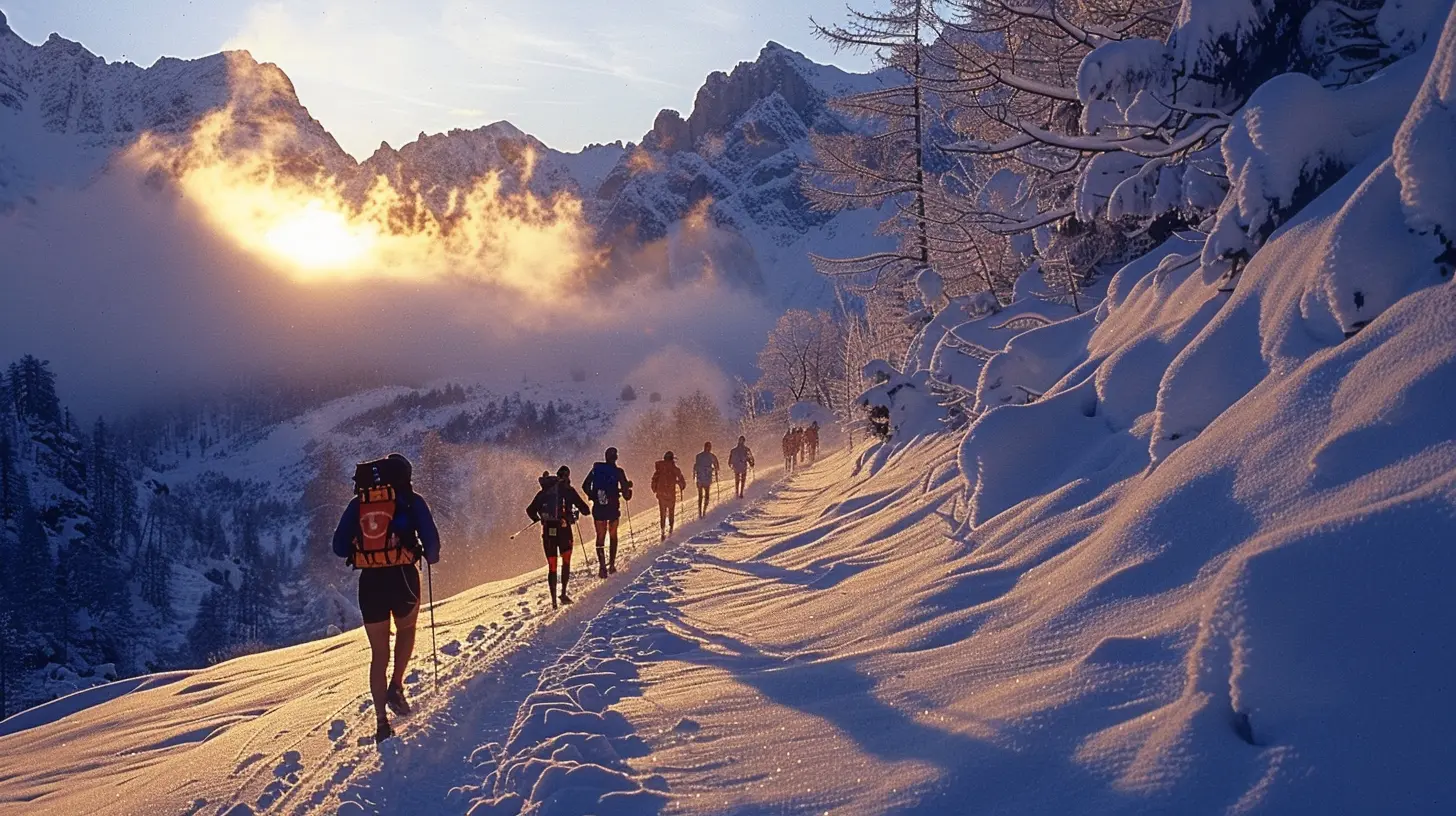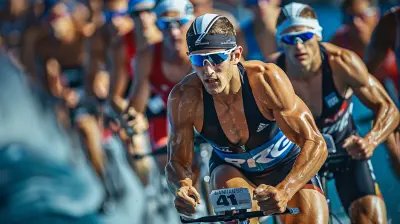How to Adjust Your Endurance Training for Different Climates
16 March 2025
Endurance training is already a challenge by itself. Whether you're preparing for a marathon, triathlon, or just trying to improve your overall stamina, it takes dedication, time, and resilience. But here's the thing — the climate can throw a wrench in your plans if you're not prepared for it. Your body reacts differently to hot, cold, humid, or even windy conditions, and adapting to these changes is key to getting the best out of your training without burning yourself out or risking injury.
In this article, we’ll dive into how to adjust your endurance training for different climates. Whether you're dealing with the searing heat of summer, the bone-chilling cold of winter, or the unpredictable winds and rain, I’ve got you covered.

Why Climate Matters in Endurance Training
Before jumping into the nitty-gritty details of how to adjust your training, let’s talk about why climate is such a big deal. You might be thinking, "Hey, running is running, no matter the weather!" But here's the thing—your body doesn't see it that way.In different climates, your body has to work harder to regulate your internal temperature. In hot weather, it sweats more to cool down, which means you lose more fluids and electrolytes. In cold weather, it works harder to stay warm, which can lead to muscle stiffness if you’re not careful. And let’s not forget the impact of humidity — it can make even a mild day feel like a sauna, affecting your performance.
Adjusting to these conditions isn't just about comfort. It’s about performance, recovery, and injury prevention. And trust me, when you're in this for the long haul, those things matter a lot.
Training in Hot Climates
1. Stay Hydrated (More Than Usual!)
This should come as no surprise, but hydration becomes absolutely critical when you're training in hot climates. You lose fluids at a faster rate due to sweating, and your body’s cooling mechanism is working overtime.Make sure to drink water before, during, and after your workout. But here’s a tip: Don't just stick to water. You’re also losing electrolytes (sodium, potassium, magnesium) when you sweat. So, include sports drinks or electrolyte tablets in your regimen to keep your body balanced.
Pro Tip:
If you're training for a long session, pre-hydrate by drinking about 16-20 oz of water 2-3 hours before your workout. Then, aim to sip water at regular intervals during your training — about 7-10 oz every 20 minutes should do the trick.2. Adjust Intensity and Duration
In hot weather, your body has to work harder to keep your core temperature down. So, it’s a good idea to reduce the intensity of your workouts, especially if you’re just starting to acclimate to the heat.If you normally run at a 7-minute mile pace, slow it down by 30 seconds or more. Focus on time on your feet rather than speed. As your body gradually adjusts, you can ramp up the intensity.
3. Timing is Everything
When it's blazing hot outside, avoid training during the peak heat of the day (usually between 10 AM and 4 PM). Instead, aim for early mornings or late evenings when the sun is lower, and the temperatures are more bearable. This small change can make a big difference in how your body handles the heat.
Training in Cold Climates
1. Layer Up, But Don’t Overdo It
The temptation when it's freezing outside is to bundle up like you’re heading to the North Pole. But too many layers can make you overheat once you start moving. Instead, think of layering in terms of three core layers:- Base Layer: This should be moisture-wicking to keep sweat away from your skin.
- Insulation Layer: Something like fleece or wool to trap warmth.
- Outer Layer: A windproof or waterproof jacket to protect against the elements.
You can always shed a layer if you start to feel too warm, but starting with the right amount will help you keep your internal temperature regulated.
2. Warm Up Indoors
In cold climates, your muscles are tighter, and your risk of injury is higher if you don’t warm up properly. I recommend doing some light jogging or dynamic stretching indoors before you head outside. This gets your heart rate up and preps your muscles for the cold. Once outside, ease into your workout — don’t go full throttle right out of the gate.3. Mind Your Extremities
Your hands, feet, and face lose heat faster than the rest of your body, so make sure to protect them. Wear thermal socks, gloves, and a hat that covers your ears. If it’s windy, a balaclava or face mask can prevent that painful windburn on your face.
Training in Humid Climates
1. Pace Yourself
Humidity is deceptive. It might not feel as hot, but the moisture in the air makes it harder for your sweat to evaporate, which hinders your body’s cooling process. So, it’s important to slow down your pace and pay more attention to your heart rate.Keep an eye on how hard your body is working (a heart rate monitor can help here). Even if you feel like you’re not pushing that hard, your body is working overtime in humid conditions.
2. Wear Moisture-Wicking Clothing
Cotton is not your friend when it's humid. It absorbs sweat and gets heavy, making you feel sluggish and uncomfortable. Opt for moisture-wicking fabrics instead. These materials pull sweat away from your skin, keeping you drier and cooler.3. Take More Breaks
It’s okay to take more frequent breaks when training in humid weather. Your body needs time to regulate itself and cool down. Don’t push through if you’re feeling overly fatigued or lightheaded — stop, hydrate, and rest for a few minutes before continuing.Training in Windy Conditions
1. Adjust Your Route
If possible, plan your training route with the wind in mind. Try to start your workout running into the wind, and finish with the wind at your back. Why? Running into the wind when you're fresh will be easier to handle, and having the wind push you at the end of your workout can give you a nice boost when you're tired.2. Shorten Your Stride
Wind resistance can make running feel like you’re fighting an invisible opponent. To combat this, shorten your stride and focus on maintaining a steady rhythm. This will reduce the surface area exposed to the wind and help you conserve energy.3. Dress for the Wind
Wind can make a cool day feel downright freezing. Wear a windproof jacket to keep your core protected. If it’s especially gusty, consider wearing a buff or scarf to shield your face and neck from the cold wind.Adapting Your Mindset for Climate Variations
Training in different climates isn’t just about physical adjustments; it’s also about mental resilience. It’s easy to get frustrated when the weather isn’t cooperating, but learning to embrace the challenge is part of the game. Remember, endurance training is as much about mental toughness as it is about physical stamina.Here’s a quick mental trick: Instead of thinking about the climate as an obstacle, think of it as an additional training tool. If you can conquer a tough workout in the heat or cold, imagine how much easier it’ll feel when conditions are perfect.
Final Thoughts
Endurance training is hard enough, and different climates add another layer of complexity. But with a little tweaking to your routine, you can still hit your goals — no matter what Mother Nature throws your way.The key is to listen to your body, make smart adjustments, and give yourself the time to acclimate. Whether you’re dealing with heat, cold, humidity, or wind, these strategies will help you stay on track without sacrificing performance or risking injury.
So, next time the weather isn’t ideal, don’t sweat it (well, maybe literally if it’s hot!). Just adjust your training, lace up those shoes, and get out there.
all images in this post were generated using AI tools
Category:
Endurance SportsAuthor:

Uziel Franco
Discussion
rate this article
14 comments
Flynn Frank
Training in the heat? Remember to hydrate—water is your best workout buddy! Cold climates? Embrace layers; you’re not preparing for a fashion show, just trying to look good while gasping for breath!
April 8, 2025 at 10:41 AM

Uziel Franco
Absolutely! Hydration and proper layering are key strategies for staying safe and effective in any climate. Thanks for the reminder!
Zevros McCool
Great tips! Adapting your endurance training to different climates can really boost your performance. Remember, sunshine or snow, every step you take is progress! Stay hydrated, listen to your body, and enjoy the adventure. You've got this! 🌟🏃♂️🌍
April 8, 2025 at 2:33 AM

Uziel Franco
Thank you! Absolutely, adapting to the climate makes a huge difference. Happy training! 🌟
Porter Nguyen
Adjusting endurance training for varying climates is crucial for optimal performance. In hot conditions, focus on hydration and acclimatization strategies, while in cold weather, prioritize layering and warm-up routines. Understanding these environmental factors can significantly enhance training effectiveness and overall results.
April 7, 2025 at 4:52 AM

Uziel Franco
Thank you for highlighting the importance of climate adjustments in endurance training. Your insights on hydration in heat and layering in the cold are essential for maximizing performance.
Peter McAdoo
Great tips on adapting endurance training for various climates! Understanding environmental impacts is crucial for optimal performance and safety.
March 31, 2025 at 11:35 AM

Uziel Franco
Thank you! I'm glad you found the tips helpful. Adapting to different climates is key to both performance and safety!
Kaitlyn Wallace
Great article! Considering factors like humidity and altitude is crucial for effective training. Incorporating gradual acclimatization and hydration strategies can significantly enhance performance and overall endurance in varying climates. Keep it up!
March 31, 2025 at 3:39 AM

Uziel Franco
Thank you! I'm glad you found the article helpful. I completely agree—acclimatization and hydration are key for optimizing performance in different climates!
Ezra Kirkpatrick
Embrace the change, thrive on!
March 29, 2025 at 1:21 PM

Uziel Franco
Thank you! Embracing change is key to optimizing performance in varying conditions!
Cassandra Snyder
Climate shapes endurance in ways we can't predict. Unravel the secrets of adaptation and discover the hidden power within.
March 26, 2025 at 9:55 PM

Uziel Franco
Absolutely! Adapting endurance training to various climates can unlock your potential and enhance performance. Let’s explore those secrets together!
Finnegan McAuley
Climate impacts physiology; adapt training wisely.
March 26, 2025 at 11:51 AM

Uziel Franco
Absolutely! Adapting your training to climate conditions is crucial for optimizing performance and health. Tailor your workouts to account for heat, humidity, and altitude for the best results.
Nix Wilson
Embrace the challenge! Adjusting to new climates fuels your growth as an athlete. Stay focused, stay positive, and keep pushing forward!
March 23, 2025 at 9:21 PM

Uziel Franco
Thank you! Absolutely, embracing new challenges is key to growth and success in endurance training.
Juno Gill
Adapting endurance training to varying climates is essential for peak performance. Listen to your body, hydrate wisely, and embrace gradual acclimatization to unlock your true potential, no matter the conditions.
March 18, 2025 at 8:00 PM

Uziel Franco
Thank you for your insight! Adapting to different climates is indeed crucial for optimizing performance. Listening to your body and staying hydrated are key components of successful training.
Wendy McCune
Great insights on adapting endurance training! Understanding temperature, humidity, and altitude effects is crucial for optimizing performance and preventing heat-related issues. Thanks for sharing!
March 18, 2025 at 5:17 AM

Uziel Franco
Thank you! I'm glad you found the insights helpful. Adapting to different climates is key for performance and safety!
Thea Gutierrez
Adapt hydration and pacing strategies to optimize performance.
March 17, 2025 at 1:33 PM

Uziel Franco
Absolutely! Adjusting hydration and pacing is crucial for maximizing performance in varying climates. Tailoring these strategies helps maintain energy and prevent fatigue.
Jessica Roth
Great insights! Adapting training is crucial. Thanks!
March 16, 2025 at 9:37 PM

Uziel Franco
Thank you! I’m glad you found it helpful!
Skylar Nguyen
Great article! Understanding how climate impacts endurance training is crucial for athletes. Your tips are practical and insightful, helping us adapt and optimize our performance no matter the conditions. Thanks for sharing your expertise!
March 16, 2025 at 4:12 AM

Uziel Franco
Thank you for your kind words! I'm glad you found the tips helpful for optimizing your training in various climates. Happy training!
MORE POSTS

The Benefits of Yoga and Stretching for Triathletes

How to Skateboard Faster Without Losing Control

The Mental Game of Extreme Sports: How to Overcome Fear

How to Develop an Efficient Run-Walk Strategy

Understanding Bicycle Gear Systems for Optimal Riding Experience

From the Field to Immortality: Athletes Enshrined in the Hall of Fame

Strength Training for Triathletes: Why It’s Essential

The Ethics of Sports Sponsorship: When Should Athletes Say No?

Identifying Busts Before They Ruin Your Fantasy Season